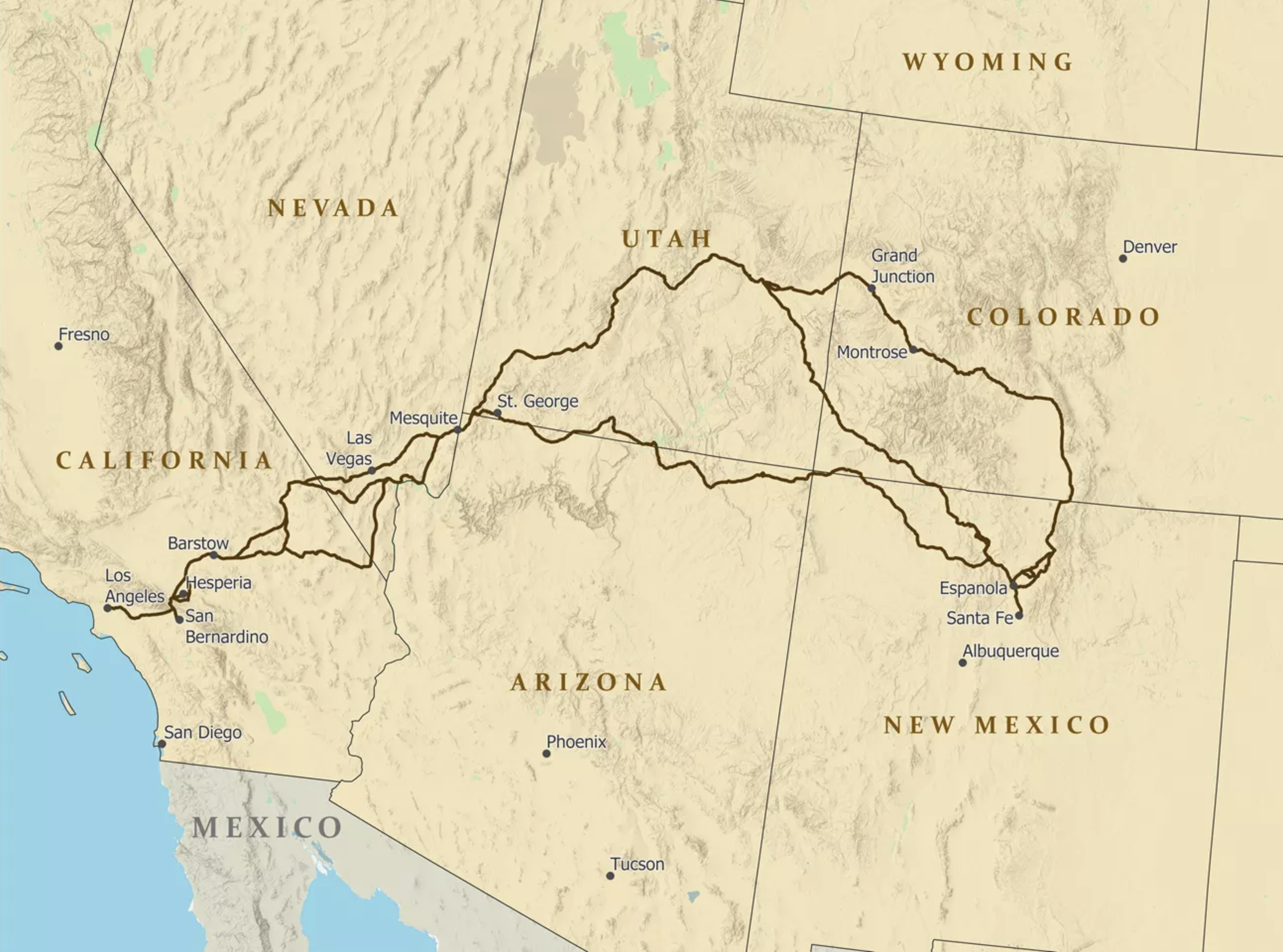Some information may be outdated.
This week, the Moab Museum team dives into the history of Spanish exploration in the state of Utah.

In 1540, Francisco Vazquez de Coronado crossed what is now Arizona and New Mexico in search of silver and gold; according to his diary, his Captain Garcia-Lopez de Cardenas may have led the first Spaniards to enter Utah. Coronado’s venture was the first of several explorations that established the Old Spanish Trail, the “longest, crookedest, most arduous pack mule route in the history of America” as the primary thoroughfare across the Colorado Plateau.
To finance disputes with its European rivals and strengthen its control over Mexico, Spain desperately needed silver. Established trade routes already linked Santa Fe to St. Louis, but Spain needed a supply route to its missions in Alta California. The Old Spanish Trail was one of a trio of overland routes that carried trade, connecting with the Santa Fe Trail to St. Louis and with the Camino Real de Tierra Adentro to Mexico City. The trail traversed 1,200 miles between Santa Fe and Los Angeles and took from 1765 to 1829 to be firmly established as a viable commercial route.
The 1765 expeditions led by Juan Antonio Maria de Rivera ventured into western Colorado in search of silver and Teguayo, a land local Native Americans believed to be the home of bearded, European-looking people. The expeditions were launched because Spanish authorities in Santa Fe desperately needed to locate silver deposits and determine if the “strange bearded men” were French or Russian explorers. The party established cordial relations with Ute- and Paiute-speaking people during their travels through southwestern Colorado to Grand Junction and on to Green River [UT], establishing the North Branch of the Old Spanish Trail.
In 1776, an expedition led by Franciscan priests Dominguez and Escalante also set out to find Teguayo and an overland route from Santa Fe to Monterey in Alta California. The expedition was stymied by conflicting goals – Church authorities sponsored the trip and assigned Dominquez to the task, while Escalante sought to find Teguayo. Though the approach of winter weather forced the padres to return to Santa Fe, the Dominguez-Escalante route became an early template for the Old Spanish Trail.
In November 1829 Spanish merchant Antonio Mariano Armijo led the first commercial caravan between Abiquiu, New Mexico, arriving in San Gabriel, California 10 weeks later. Following the northern border of Nuevo Mexico and Arizona, the route crossed Navajo and Paiute lands into the Mojave Desert, and later became known as the Armijo Route of the Old Spanish Trail. The Northern Route passed through Cortez, Colorado and Monticello, Utah, crossed the Colorado River at Moab, and headed toward Green River.
To explore the Old Spanish Trail, check out the Old Spanish National Historic Trail Mobile Map, developed by the Bureau of Land Management in collaboration with the National Park Service and Old Spanish Trail Association, which offers interpretive information about points of interest along the trail. The mobile map directs users to locations for interactive learning about the history of the trail, including at the Moab Museum, out by Courthouse Wash, and Mill Canyon. To learn more about colonization and exploration visit moabmuseum.org and investigate the broader story via digital exhibitions and storylines.
The Moab Museum is dedicated to sharing stories of the natural and human history of the Moab area. To explore more of Moab’s stories and artifacts, find out about upcoming programs, and become a Member, visit www.moabmuseum.org.
Appreciate the coverage? Help keep local news alive.
Chip in to support the Moab Sun News.





